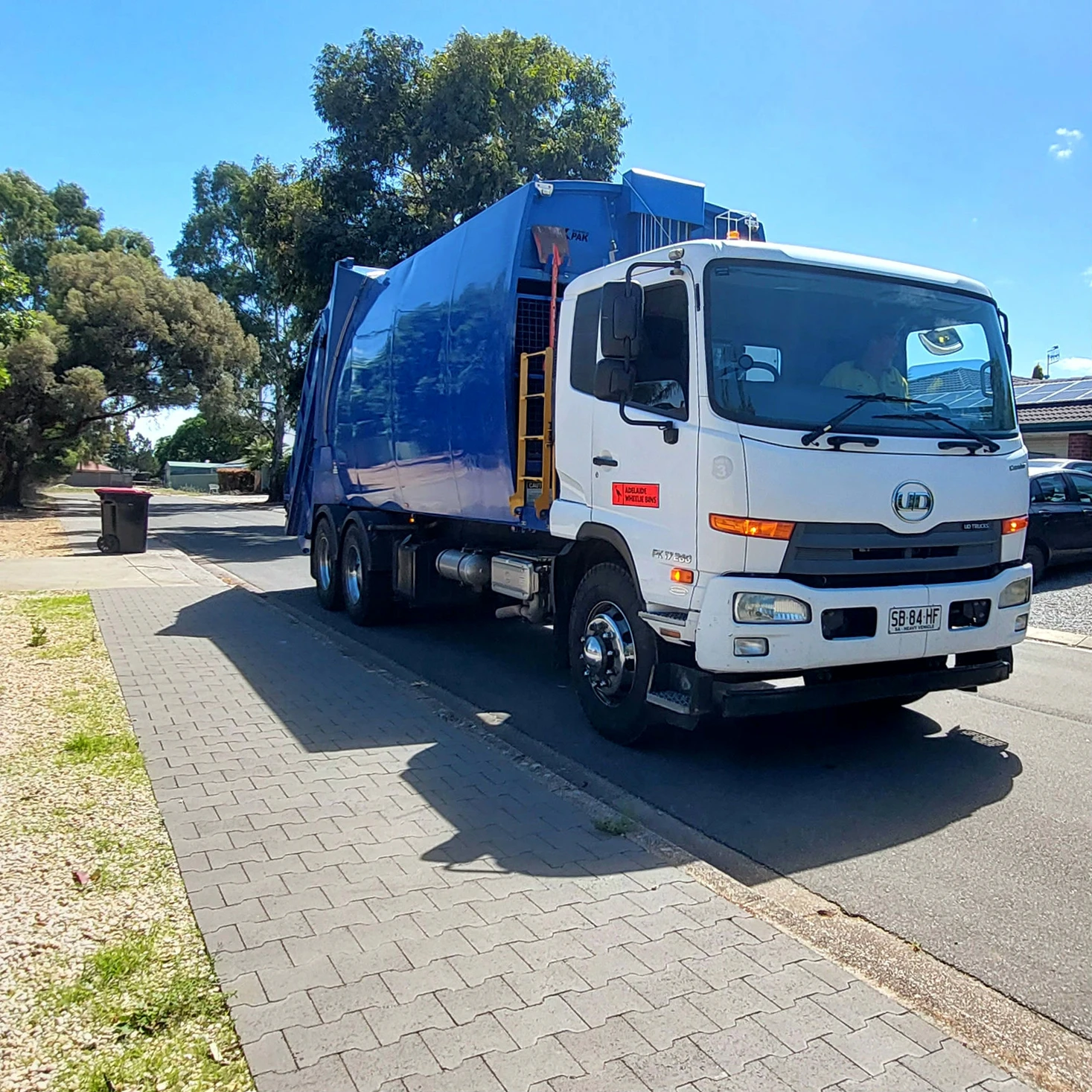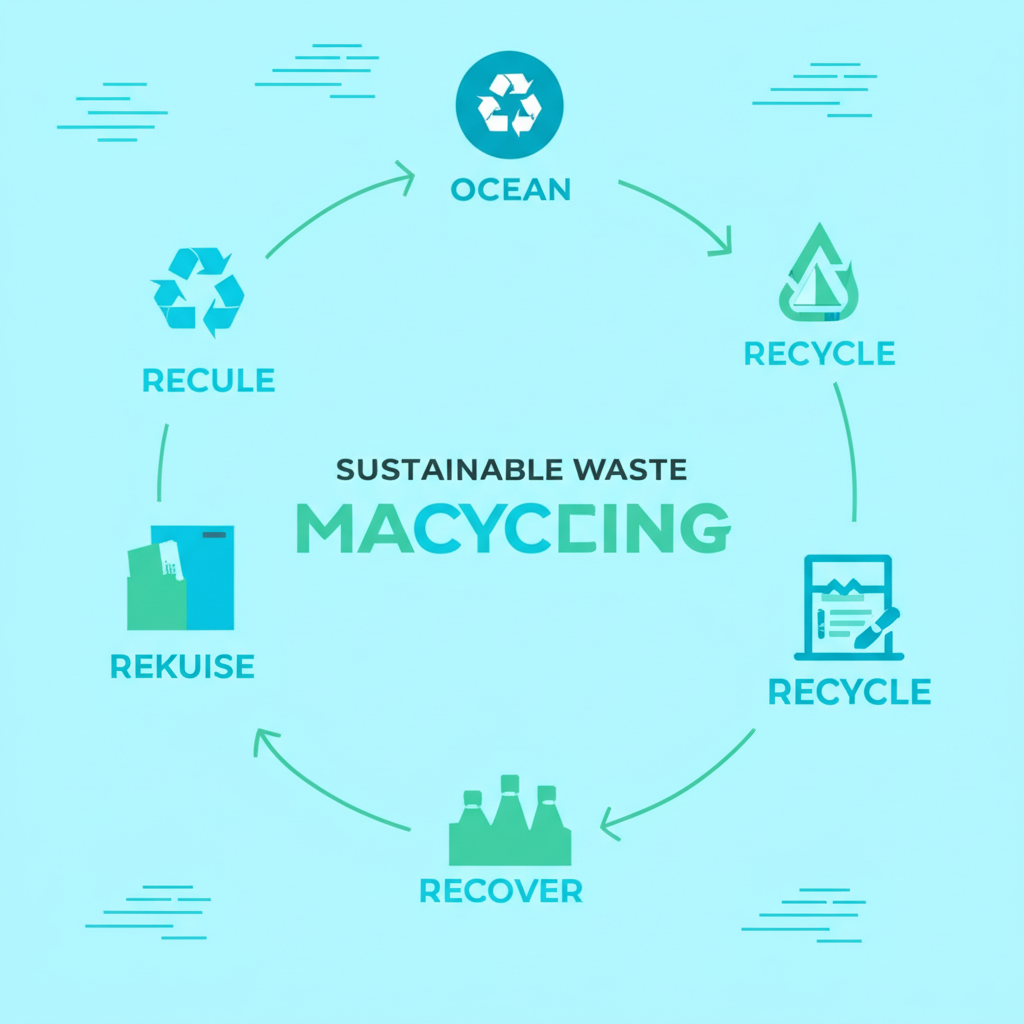How to Choose the Right Bin Size for Your Adelaide Business
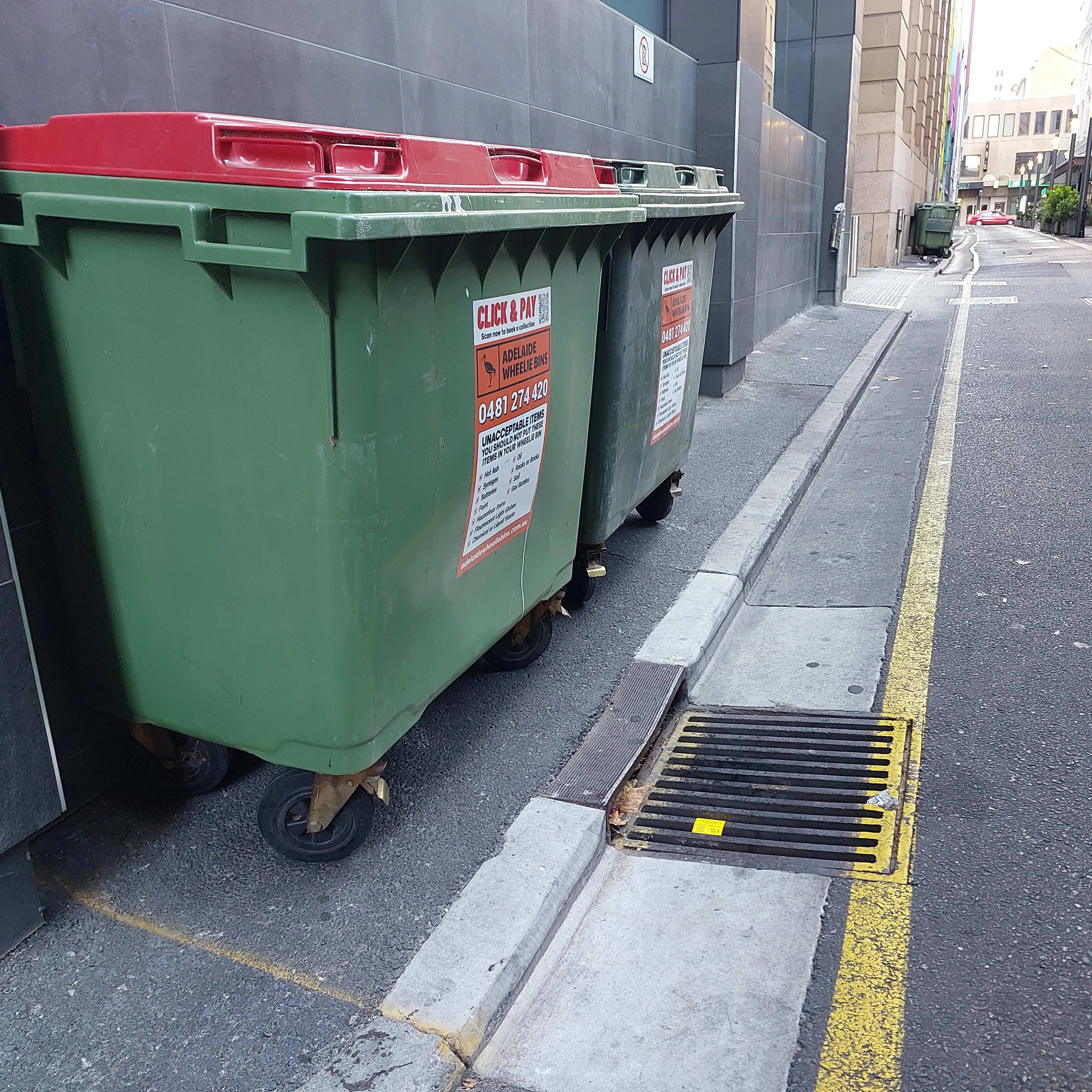
Selecting the right bin size for your Adelaide business is more than just a logistical decision—it's a choice that impacts your operational efficiency, waste management costs, and environmental footprint. With multiple options available, from compact 240L bins to spacious 1100L containers, finding the perfect match for your specific needs can be challenging. This comprehensive guide will help you navigate the selection process with confidence.
Why Bin Size Matters for Your Business
Before diving into specific bin options, it's important to understand why choosing the right size is crucial:
- Cost efficiency: Oversized bins mean paying for unused capacity, while undersized bins require more frequent collections, increasing costs
- Space utilization: Commercial space in Adelaide is valuable—your waste solution should maximize available space without creating congestion
- Operational flow: Properly sized bins ensure waste management doesn't disrupt your business operations
- Environmental impact: Right-sizing helps optimize collection frequency, reducing carbon emissions from transport
- Compliance: Adequate capacity prevents overflow issues that could violate local regulations
Did You Know?
According to waste management studies, businesses with properly sized bins can reduce their waste collection costs by up to 30% compared to those using inappropriate container sizes.
Commercial Bin Size Options for Adelaide Businesses
Adelaide Wheelie Bin Hire offers several standard bin sizes for commercial clients. Let's explore each option in detail:
240L Wheelie Bins

Specifications:
- Dimensions: Approximately 1080mm (H) x 580mm (W) x 740mm (D)
- Capacity: 240 liters / up to 60kg of waste
- Collection method: Rear-lift trucks
Ideal for:
- Small offices with 1-10 employees
- Retail shops with limited space
- Cafes with minimal food waste
- Professional services (accounting, legal, etc.)
- Businesses with space constraints
360L Wheelie Bins
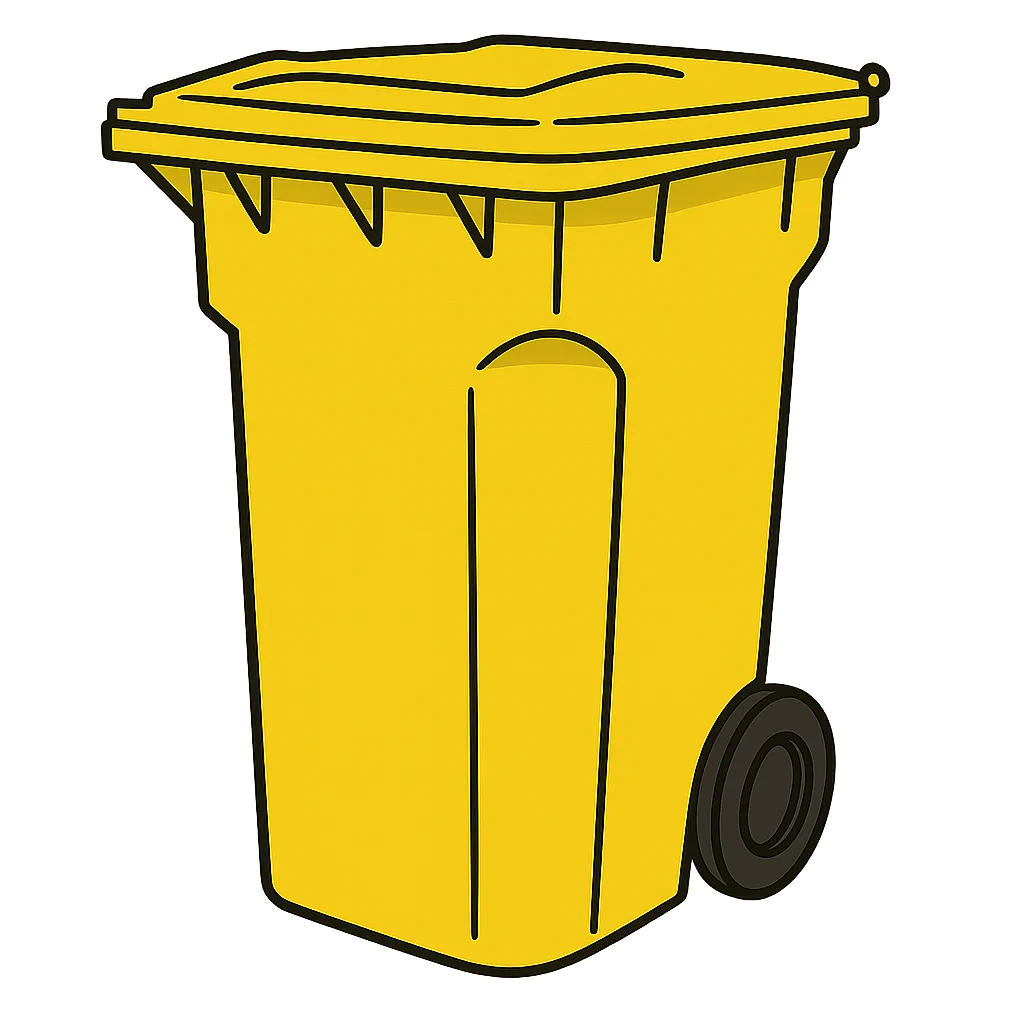
Specifications:
- Dimensions: Approximately 1100mm (H) x 620mm (W) x 850mm (D)
- Capacity: 360 liters / up to 60kg of waste
- Collection method: Rear-lift trucks
Ideal for:
- Medium-sized offices with 10-20 employees
- Cafes and small restaurants
- Retail stores with moderate packaging waste
- Small healthcare facilities
- Businesses with slightly higher waste volumes
660L Bins

Specifications:
- Dimensions: Approximately 1310mm (H) x 1370mm (W) x 780mm (D)
- Capacity: 660 liters / up to 120kg of waste
- Collection method: Rear-lift trucks
Ideal for:
- Medium to large offices with 20-50 employees
- Restaurants and busy cafes
- Small manufacturing facilities
- Retail centers with multiple shops
- Schools and educational facilities
1100L Bins
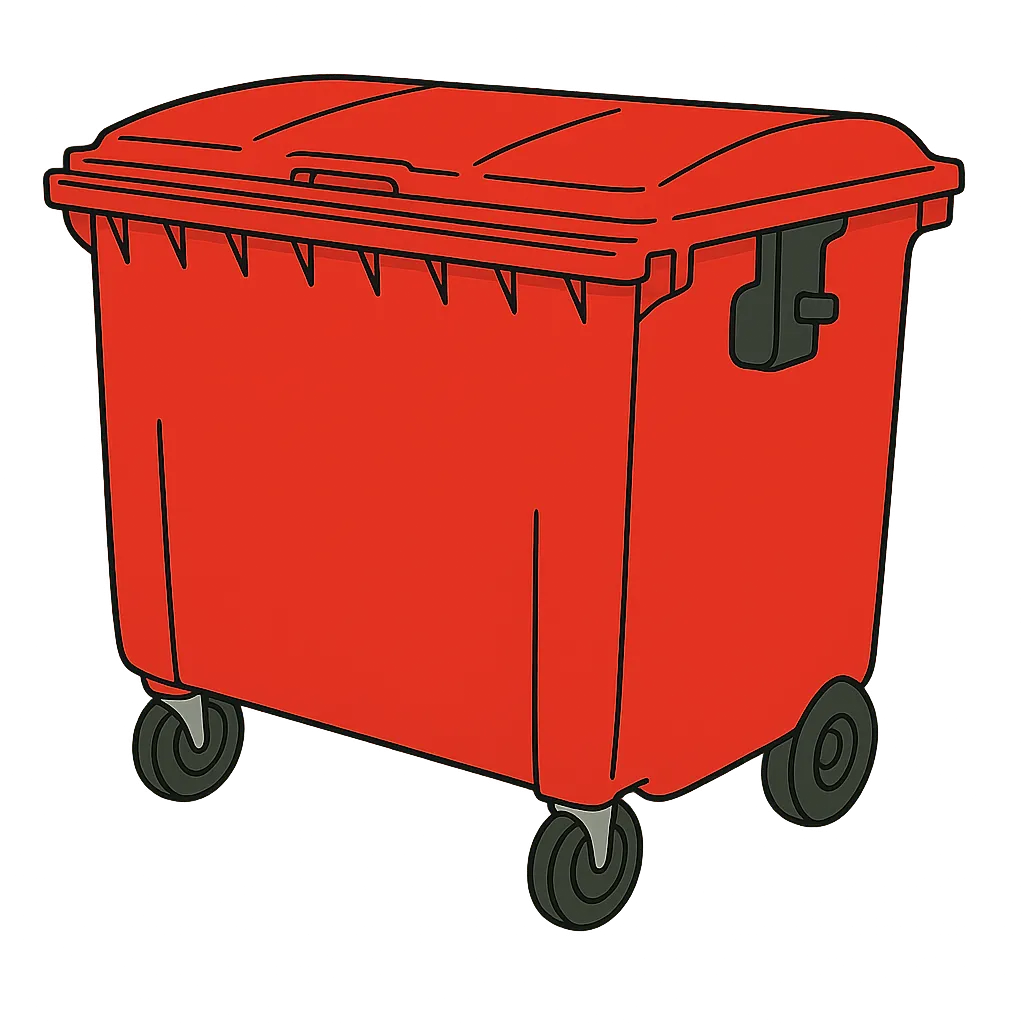
Specifications:
- Dimensions: Approximately 1370mm (H) x 1370mm (W) x 1080mm (D)
- Capacity: 1100 liters / up to 120kg of waste
- Collection method: Rear-lift trucks
Ideal for:
- Large offices with 50+ employees
- Shopping centers and malls
- Large restaurants and food courts
- Manufacturing and industrial facilities
- Hotels and accommodation providers
- Healthcare facilities and hospitals
Adelaide Wheelie Bin Hire Advantage
Not sure which bin size is right for your business? Our waste management experts can conduct a free on-site assessment to recommend the optimal bin size and collection frequency based on your specific needs and space constraints.
Request a free waste assessmentFactors to Consider When Choosing Your Bin Size
Beyond the basic capacity guidelines, several factors should influence your bin size selection:
1. Waste Volume and Type
Different businesses generate different amounts and types of waste:
- Paper-heavy offices generate high volumes but lightweight waste, making larger bins with less frequent collection often ideal
- Food service businesses produce dense, heavy, and potentially odorous waste, requiring smaller bins with more frequent collection
- Retail operations often need capacity for bulky packaging materials, making larger bins advantageous
- Manufacturing facilities may produce specialized waste streams requiring multiple bin types
2. Available Space
Your physical location constraints play a crucial role:
- Limited space may necessitate smaller bins with more frequent collection
- Bin storage location affects accessibility for both staff and collection vehicles
- Indoor vs. outdoor storage influences bin selection, particularly for food waste
- Access routes must accommodate both bin movement and collection vehicles
3. Collection Frequency
The relationship between bin size and collection schedule is critical:
- More frequent collection allows for smaller bins but increases service costs
- Less frequent collection requires larger bins but may reduce overall costs
- Seasonal variations in waste generation may require flexible scheduling
- Waste type influences optimal collection frequency (e.g., food waste requires more frequent collection)
4. Growth Projections
Consider your business's future needs:
- Anticipated expansion may justify starting with larger bins
- Seasonal business fluctuations might require flexible capacity solutions
- Changing waste profiles due to new products or services should be anticipated
- Sustainability initiatives may reduce waste volumes over time
Industry-Specific Bin Size Recommendations
Different industries have unique waste management needs. Here are tailored recommendations for common business types in Adelaide:
Hospitality and Food Service
Cafes and Small Restaurants (up to 50 seats)
- General waste: 240L-360L with 2-3 collections per week
- Recycling: 240L with 1-2 collections per week
- Food organics: 140L-240L with 2-3 collections per week
- Key consideration: Food waste is heavy and can cause odor issues, so more frequent collection is often preferable to larger bins
Larger Restaurants (50+ seats)
- General waste: 660L-1100L with 2-3 collections per week
- Recycling: 360L-660L with 1-2 collections per week
- Food organics: 240L with 3+ collections per week
- Key consideration: Space for bin storage is often limited in restaurant settings, so bin placement and access must be carefully planned
Retail Businesses
Small Retail Shops
- General waste: 240L with 1 collection per week
- Recycling (primarily cardboard): 240L-360L with 1 collection per week
- Key consideration: Cardboard can be bulky but lightweight, so compaction or flattening procedures can maximize bin capacity
Larger Retail Stores
- General waste: 660L with 1-2 collections per week
- Recycling: 660L-1100L with 1-2 collections per week
- Key consideration: Seasonal variations (e.g., holiday periods) may require temporary capacity increases
Office Environments
Small Offices (up to 20 staff)
- General waste: 240L with 1 collection per week
- Paper recycling: 240L with 1 collection per week
- Commingled recycling: 240L with fortnightly collection
- Key consideration: Paper recycling is often the largest waste stream in offices
Medium to Large Offices (20+ staff)
- General waste: 360L-660L with 1-2 collections per week
- Paper recycling: 360L-660L with 1-2 collections per week
- Commingled recycling: 240L-360L with weekly collection
- Key consideration: Digital transformation initiatives may reduce paper waste over time
Industrial and Manufacturing
Small Manufacturing Operations
- General waste: 660L with 1-2 collections per week
- Recycling: 660L with 1 collection per week
- Specialized waste streams: Custom solutions based on materials
- Key consideration: Manufacturing waste can be heavy and may require specialized handling
Larger Industrial Facilities
- General waste: Multiple 1100L bins with 1-3 collections per week
- Recycling: Multiple 1100L bins with 1-2 collections per week
- Key consideration: May require specialized equipment like compactors for efficient waste management
Signs You Need to Reassess Your Bin Size
Even with careful planning, your waste management needs may change over time. Watch for these indicators that it's time to reassess your bin size:
Consistent Overflow
If your bins are regularly full before collection day, you're likely underestimating your waste volume and need larger bins or more frequent collection.
Half-Empty Collections
Consistently half-empty bins at collection time indicate you may be paying for unnecessary capacity and could benefit from smaller bins or less frequent service.
Business Growth
Significant increases in staff numbers, production volume, or customer traffic typically correlate with increased waste generation.
Operational Changes
New products, services, or processes can dramatically change your waste profile and may require adjustments to your bin configuration.
Seasonal Patterns
If your waste volumes fluctuate predictably throughout the year, a flexible approach with temporary capacity adjustments may be more cost-effective.
Waste Reduction Initiatives
Successful sustainability efforts can significantly reduce waste volumes, potentially allowing for smaller bins or less frequent collection.
Cost Considerations: Finding the Sweet Spot
Optimizing your bin size isn't just about capacity—it's about finding the most cost-effective solution for your business:
The Total Cost Equation
When evaluating waste management costs, consider these factors:
- Bin rental fees: Larger bins typically have higher rental costs
- Collection frequency charges: More frequent service increases operational costs
- Waste disposal fees: Often charged by weight or volume
- Overflow or contamination penalties: Improper waste management can result in additional charges
- Space opportunity cost: Large bins occupy valuable commercial space
Cost Optimization Tip
For many Adelaide businesses, the most cost-effective approach is to select a bin size that requires collection just before it reaches full capacity. This minimizes both unused capacity costs and the risk of overflow charges.
Balancing Collection Frequency and Bin Size
Finding the optimal balance between bin size and collection frequency depends on several factors:
- Waste density: Heavy waste may require smaller bins with more frequent collection
- Decomposition concerns: Food and organic waste typically needs more frequent collection regardless of volume
- Space constraints: Limited space may necessitate smaller bins with more frequent collection
- Operational patterns: Collection should align with your business operations to minimize disruption
Multiple Bins vs. Larger Bins
Sometimes the solution isn't a single larger bin but multiple smaller bins:
Advantages of Multiple Smaller Bins
- Flexibility: Can be distributed to different areas of your facility
- Maneuverability: Easier to move and position, especially in tight spaces
- Redundancy: If one bin is damaged, others remain usable
- Waste segregation: Facilitates separation of different waste streams
Advantages of Fewer Larger Bins
- Space efficiency: One large bin often has a smaller footprint than multiple small bins of equivalent total capacity
- Simplified collection: Fewer bins to service means quicker collection
- Lower rental costs: Total rental fees are typically lower for one large bin versus multiple small bins
- Reduced maintenance: Fewer components that could require repair or replacement
Conclusion: Making Your Final Decision
Selecting the right bin size for your Adelaide business requires balancing multiple factors including waste volume, space constraints, collection frequency, and cost considerations. While general guidelines can provide a starting point, the optimal solution often depends on your specific business circumstances.
Adelaide Wheelie Bin Hire specializes in helping businesses find the perfect waste management solution through our consultative approach. Our waste management experts can conduct a comprehensive assessment of your needs and recommend the ideal bin size and collection frequency to optimize both cost and efficiency.
Remember that waste management needs evolve over time, so regularly reassessing your bin size requirements ensures your solution continues to meet your business needs. With the right bin size, you can maintain a clean, efficient workplace while controlling costs and minimizing environmental impact.
Need Help Selecting the Right Bin Size?
Contact Adelaide Wheelie Bin Hire today for expert advice on the optimal waste management solution for your business.
